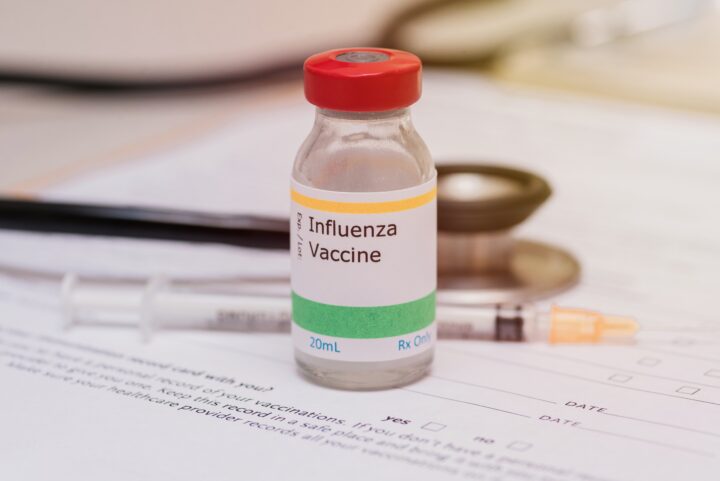Flu season can be challenging for everyone but is particularly burdensome for vulnerable communities, employers, and families living on fixed incomes. The flu disrupts lives across the U.S. from October to April, peaking between December and February. The community impact of flu season is more than just sniffles and fevers; it’s a systemic issue with far-reaching implications.
The Community Impact of Flu Season: By the Numbers
 The Centers for Disease Control and Prevention (CDC) recommend flu shots for everyone over six months.
The Centers for Disease Control and Prevention (CDC) recommend flu shots for everyone over six months.
However, millions of Americans still get sick each year, and tens of thousands die from flu-related complications. The economic toll is substantial, too. Employers lose an estimated $11.2 billion annually due to flu-related issues, while American workers forgo more than $16 billion in earnings.
Employers are hit hard during flu season, with American workers missing a staggering 111 million workdays yearly because of the flu. Maintaining productivity while ensuring employees’ well-being is a tricky balancing act.
The Vulnerable Populations: An Interview with Lydia Allen
To dig deeper into the community impact of flu season, particularly among NVFS’ client population, families and seniors on fixed incomes, we spoke to Lydia Allen, NVFS Community Health Equity Program Manager.
“Someone with the flu misses an average of four days of work or school. This leads to a domino effect, affecting everything from lost wages to medication costs and doctor’s visits,” said Allen.
Q: How does NVFS Help the community during flu season?
Allen: NVFS helps the community before, during, and after the flu season. Here are some ways we help those vulnerable in the Northern Virginia communities.”
· Before Flu Season: NVFS case managers provide information about available immunizations.
· During the Flu Season, NVFS case workers encourage clients to visit primary care providers or urgent care centers for medical treatment. Without a healthcare provider, NVFS refers clients to free community clinics.
· After Flu Season: NVFS stresses the importance of preventative care visits and up-to-date immunizations.
Q: Is there bilingual assistance available in the Northern Virginia communities?
Allen: “In the Community Health Equity department at NVFS, about 75% of our staff are bilingual English-Spanish speakers.”
Low-Cost or No-Cost Flu Shots

Federally Qualified HealthCare Centers and big-box pharmacies often offer low-cost or free flu shots.
“Flu vaccines have been shown to reduce flu-related illnesses and the risk of serious flu complications that can result in hospitalization or even death.”–CDC
Q: Do NVFS case workers help clients find low-cost or no-cost immunizations?
Allen: “Yes, our case managers can help clients find where to get a flu shot at low or no cost. Also, here are two help resources for those needing a low-cost solution from GoodRX and the CDC.”
No Insurance? How to Get A Low-Cost Flu Shot (Or for Free) – GoodRx
About the Vaccines for Children Program (VFC) | CDC
The Wellness Connection
Allen emphasized that recovering from the flu is often tied to overall health.
“We track wellness visits, and if a client hasn’t had a check-up within a year, they get a reminder call. We also help clients get prescription medication for chronic illnesses if they’re under-insured.”—Lydia Allen.
The Impact on Northern Virginia
The Community Impact of Flu Season stretches beyond individual health, affecting workplace productivity and community resources and particularly impacting those living on a fixed income. Community organizations like NVFS offer a crucial support network to mitigate these impacts. While flu season is an annual challenge, collective and individual efforts can significantly reduce its toll on our communities.
By understanding the community impact of flu season, we are better prepared to protect ourselves and support our neighbors. So, this October, or even if it’s later in November, remember that getting your flu shot is not just about you; it’s about your community, too.



